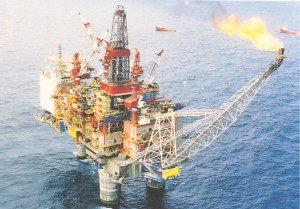Influence of marine water on Nickel based super alloys
The alloys tested are austenitic stainless steel type 304, SS 316, cupronickel alloy 90/10, cupronickel alloy 70/30, Superalloy Incoloy alloy 825 and Inconel 625. This article describes the performance of these alloys in the marine water.
The samples of these alloys were placed in the seawater in the different levels such as above water, partially immersed and completely immersed in the water. The water flow was controlled at room temperature.
For the samples that are completely immersed, reduction in the corrosion rates with greater test time for the whole test alloys was observed. The cause for this behavior was different among alloys based on their chemistry.
The corrosion product on cupronickel alloys is adequate to protect them. The oxide layer is quickly developed on this alloy’s surface however it is a time taking process. This oxide film contains iron oxide and nickel oxide. So the attack of marine water is reduced by content of iron in alloy as well as iron ions in the water stream.
Stainless steel
The corrosion rate in stainless steel is featured to the thickening of the oxide layer on the alloy’s surface. Stainless steel 316 showed better behavior above the water rather in the immersed position. Higher corrosion rate above seawater is because of presence of oxygen. Higher oxygen concentration increases the corrosive action that results into pitting. In other alloy samples, the corrosion rate above the water was lower than in the immersion position.
An enhancement in pitting density and pit depth on stainless steel 304 in the immersed level was higher than above water.
Nickel Alloys
The corrosion behavior of nickel based super alloys above the water shown two different natures rather with immersed material. In some conditions the marine water corrosion was higher above the water than the immersed one. Oxidation of Incoloy 825 was also noticed but to a nominal level. Higher corrosion of alloy 625 in the immersed position instead above the water increases the thickness of security layer. So alloy 625 remained pitting free in all locations.
The most affected region in the samples was found at water line. This attack could be caused by the development of differential aeration cell. As of mild oxygen solubility in water causes to offer higher oxygen concentration above the water surface, the pitting of different depths was noticed in the whole alloy samples except Inconel alloy 625.
The corrosion resistance offered by alloy samples in the increasing order-
Carbon steel < SS 304 < SS316 < Cupronickel alloy 90/10 < Incoloy 825
The corrosion rate attained by metals reduces with increase in molybdenum concentration. Incoloy 825 offers better corrosion resistance in the partially and fully immersed conditions as compare to SS 316 because of presence of high chromium content in alloy 825.
In the partially immersed region, chromium and titanium content in alloy 825 help decreasing the pit depth unlike to SS 316 that contains similar molybdenum content.
Results
Inconel plate of alloy 625 offered the best service at all testing regions.
Carbon steel attained high corrosion rate in above seawater, partially immersed and fully immersed positions.
Incoloy 825 offered the beneficial performance in the partially submerged region.


